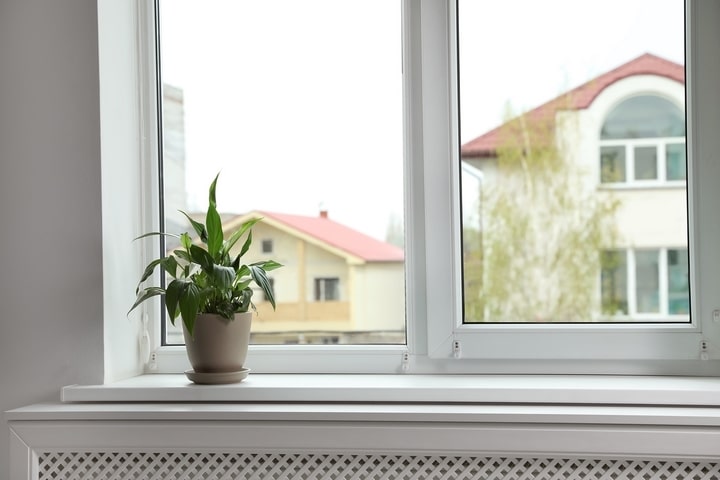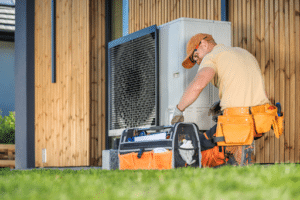Finding the best humidity level in your house can be a delicate balancing act. When the humidity levels are too high, the air will feel uncomfortably wet and stuffy. You will begin sweating more, but the air is so humid that your sweat does not evaporate quickly. The high humidity environment will force your body to work harder to cool off, which leads to excessive sweating.
There are negative consequences with prolonged periods of high humidity. You may experience allergy flare-ups, respiratory problems, and sleep interruptions. In addition, you may notice the gradual growth of mould and mildew within your surroundings. Once these fungi begin to grow, they will only continue until your humidity problem is properly addressed.
A hygrometer can read the humidity levels and measure the amount of moisture in the air. The ideal indoor humidity level should be around 30% to 50%. If the rating exceeds this range, you need to find effective ways on how to reduce the humidity in your house.
Below are seven ideas on how to lower humidity and bring it down to an acceptable level:
1. Use a dehumidifier to lower humidity in the house.

A dehumidifier is an absolute necessity on how to reduce high humidity in the house. The dehumidifier will help to remove excess moisture as the air passes through the device. Once the air reaches you, it will feel cooler and drier as a result.
In addition, the dehumidifier can help to reduce some of the common allergens in the air, such as dust mites, mould spores, and mildew. The powerful device can also make your home smell better by reducing any musty or rotting odours. With the dehumidifier running quietly in the background, you will end up with healthier indoor air quality throughout your house.
2. Fix any leaking pipes around the house.

Leaking pipes lead to excess moisture and condensation, which are common culprits for the high humidity around the house. Check your pipes, faucets, and plumbing fixtures for any possible leaks. You should also check your gutters, which are one of the likeliest sources of indoor water leaks.
If you identify a leak, wrap the exposed pipe with insulation. Your goal is to minimize moisture and prevent condensation from infiltrating your home through these openings. While the smaller leaks could be difficult to detect at first, some of the possible signs include stained drywall, wet spots, and inconsistent water bills.
3. Use your air conditioner to reduce humidity.

Your air conditioning system can be used to lower high humidity levels in the house. An air conditioner works by introducing cool air and removing warm air simultaneously. During the process of absorbing heat, the air conditioner also removes some of the moisture from the air. This makes the air less humid as a result.
In order to maximize its effectiveness, make sure your air conditioner is functioning properly and maintained regularly. The air filter should also be frequently cleaned. Using the air conditioner to regulate your humidity levels is recommended in summer, but you will need alternative solutions during the cold winter months.
4. Open the windows to lower humidity levels.

If you need a quick and temporary way to lower the humidity in your house, an open window could prove to be useful. The act of opening a window isn’t going to eliminate humidity altogether, but it will help to improve the air flow. The increased circulation will be effective in evaporating more moisture, so you should notice less humidity in the air.
5. Limit the amount of plants in your house.

When you have many indoor plants in your home, high humidity is more likely to occur. As lovely as plants are, they do release a lot of moisture into the air. In order to control the humidity levels, you can either move the plants outside or limit the amount of plants within your indoor spaces. If you keep the plants inside, place them in a room with proper ventilation.
6. Use your ventilation fans in the kitchen and washroom.

Many modern homes are built with ventilation fans in the washrooms and exhaust fans in the kitchens. Use these fans wisely to reduce the excess humidity in your house. These fans are designed to extract damp air from the area. If you leave the fans powered on for a while, this will help to reduce the humidity levels in your home.
7. Dehumidify a room with charcoal briquettes.

Using charcoal briquettes is an interesting way to lower the humidity levels. Take a few clean charcoal briquettes, put them in a basket, and place these strategically around the high humidity sections of your home. Since charcoal can absorb a lot of moisture, the briquettes will be effective in reducing humidity over time. They can be replaced every few months for maximum impact.



